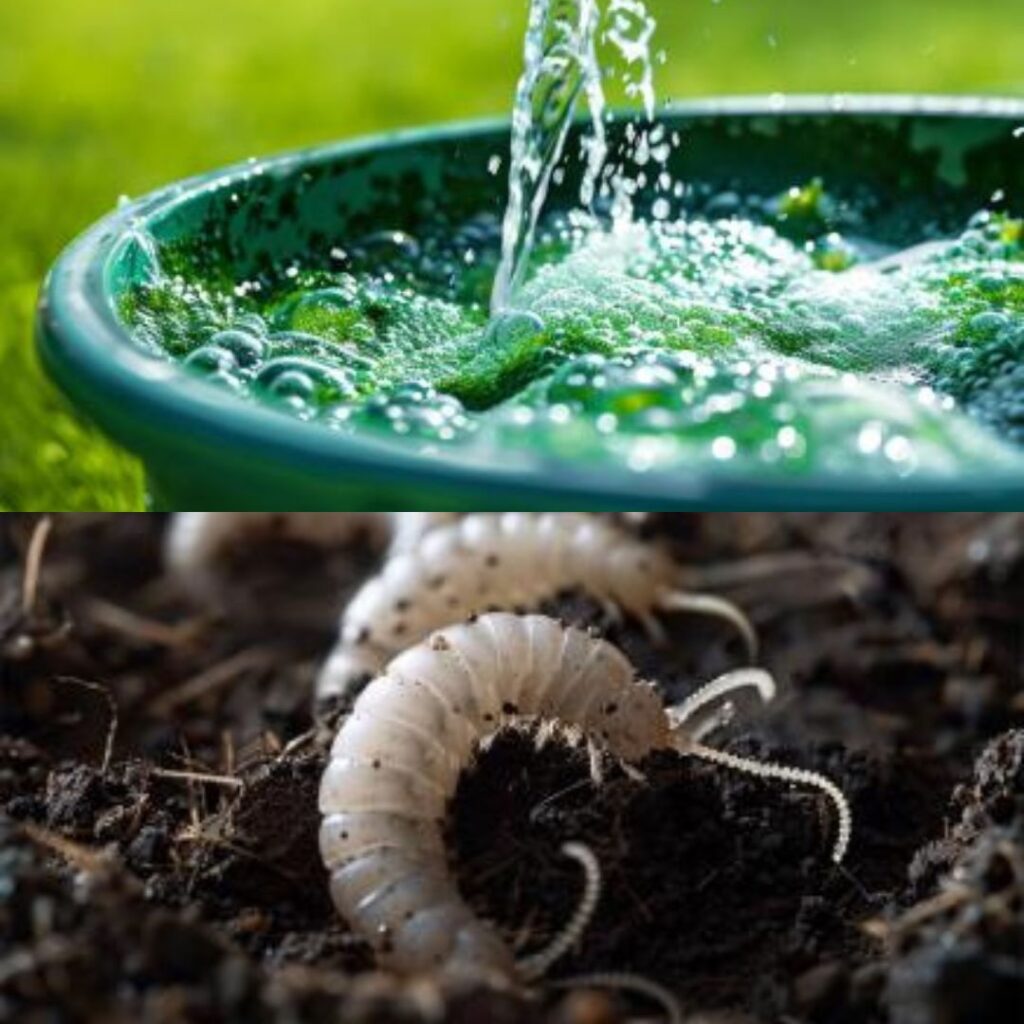
Grubs are a common enemy for lawn enthusiasts and gardeners alike. These pesky larvae of beetles can wreak havoc on your lawn, causing patches of dead grass and even attracting other unwanted pests like raccoons and skunks. Over the years, I’ve tried numerous methods to deal with these destructive invaders, but nothing has been as effective—or as effortless—as the trick my dad taught me. This simple method takes just 2 minutes, requires minimal effort, and best of all, it really works.
Understanding the Problem: What Are Grubs?
Before diving into the solution, it’s important to understand what grubs are and why they pose such a threat to your lawn. Grubs are the larvae of various beetles, including Japanese beetles, June beetles, and European chafers. These white, C-shaped pests live in the soil and feed on the roots of grass, which leads to thinning and browning of your lawn.
Grub Life Cycle:
- Late Summer: Beetles lay their eggs in the soil.
- Fall: Eggs hatch into grubs, which begin feeding on grassroots.
- Winter: Grubs burrow deeper into the soil to overwinter.
- Spring: Grubs move closer to the surface to resume feeding until they mature into adult beetles, repeating the cycle.
The Trick: A Simple Solution to a Common Problem
Now, here’s the trick my dad shared with me—a solution so simple it’s almost hard to believe it works. It involves using a natural, readily available product that you might already have at home: dish soap.
Step-by-Step Guide
1. Gather Your Supplies:
- Bucket or Large Watering Can
- Dish Soap: Any brand will do, but it’s best to use a biodegradable, eco-friendly option.
- Water
- Watering Nozzle or Hose (optional)
2. Mix the Solution:
- Fill the Bucket: Fill the bucket or watering can with about a gallon of water.
- Add Dish Soap: Add 2-4 tablespoons of dish soap to the water. The exact amount isn’t crucial, but around 2-4 tablespoons should suffice.
3. Apply to the Affected Area:
- Identify Grub-Infested Areas: Look for spots where the grass is thinning, yellowing, or dying.
- Pour the Solution: Pour the soapy water mixture evenly over these areas. If you have a large area to cover, consider using a hose-end sprayer attachment for your garden hose.
4. Wait and Watch:
- Let the Solution Work: After you’ve applied the solution, simply wait a few minutes. The dish soap irritates the grubs, forcing them to come to the surface of the soil.
5. Dispose of the Grubs:
- Pick Them Up: As the grubs surface, you can easily pick them up and dispose of them.
- Let Nature Help: Birds love to feast on grubs, so if you leave them out for a little while, nature might even take care of the cleanup for you.
How It Works: The Science Behind the Trick
Dish soap works wonders on grubs because it reduces the surface tension of the water, allowing it to penetrate the soil more effectively. When the soapy water comes into contact with the grubs, it irritates their skin, which forces them to come to the surface to escape the discomfort. Additionally, the soap can clog their spiracles (small openings that insects use to breathe), further discouraging them from staying buried in your lawn.
This method doesn’t kill the grubs outright, but it does make them easier to remove manually. For a more permanent solution, you might need to repeat the process a few times or combine it with other grub control methods, like nematodes or milky spore treatments.
Benefits of This Method
- Eco-Friendly: Unlike chemical pesticides, dish soap is generally safe for the environment, your pets, and your family.
- Cost-Effective: You don’t need to spend money on expensive pest control products. A little dish soap and water are all it takes.
- Quick and Easy: The entire process takes just a few minutes and requires minimal effort.
- Immediate Results: You can see the grubs surfacing within minutes, making it an instantly gratifying solution.
Additional Tips for Grub Prevention
While this trick is highly effective for dealing with grubs that are already present, prevention is always better than cure. Here are some tips to keep your lawn grub-free:
- Healthy Lawn Maintenance: Keep your lawn healthy by watering deeply and infrequently, mowing at the correct height, and aerating the soil to encourage strong root growth.
- Nematodes: Consider applying beneficial nematodes, which are microscopic worms that naturally target and kill grubs without harming your lawn.
- Milky Spore: This naturally occurring bacterium can be applied to your lawn to specifically target Japanese beetle grubs. Once established, it can provide long-term control.
Grubs can be a real headache for homeowners, but with this simple trick my dad taught me, you can tackle the problem in just 2 minutes with zero effort. The next time you notice your lawn showing signs of grub damage, grab some dish soap, mix it with water, and watch as these pests come to the surface. With a little consistency and some preventative measures, you can keep your lawn looking lush and green all season long.